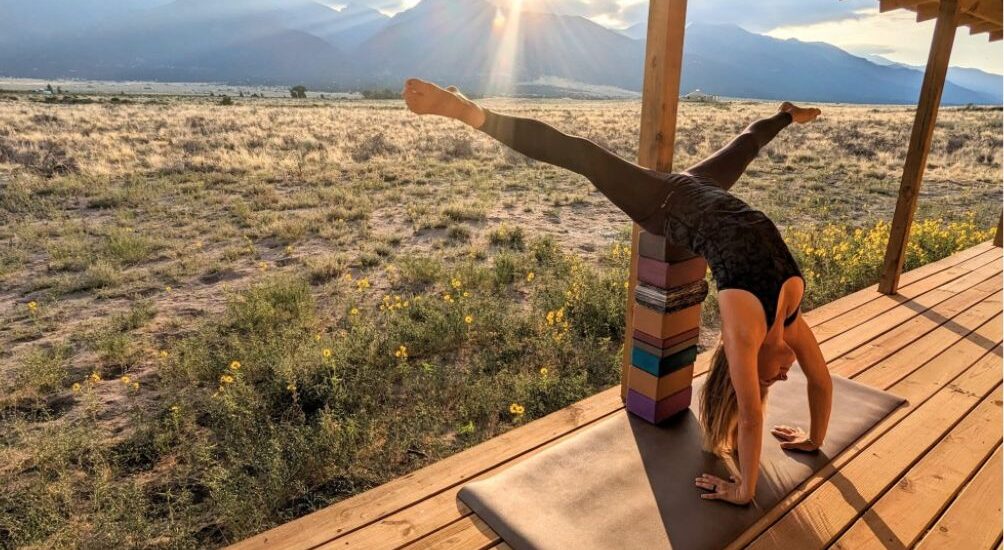Yoga is an ancient practice that combines physical postures, breathing exercises, and meditation to promote mental and physical well-being. It has gained immense popularity worldwide due to its holistic approach to health and fitness. One of the most valuable tools in yoga practice, especially for beginners and those with flexibility issues, is the yoga block. In this comprehensive guide, we’ll explore the benefits of yoga and how yoga blocks can enhance your practice.
The Benefits of Yoga
Yoga offers a myriad of benefits that cater to the mind, body, and spirit. Here are some of the most notable advantages:
1. Improves Flexibility
One of the most obvious benefits of yoga is improved flexibility. Regular practice helps lengthen muscles and increase the range of motion in joints. This can reduce the risk of injuries and improve overall physical performance.
2. Strengthens Muscles
Yoga poses require the engagement of various muscle groups, which helps build strength. Unlike traditional weight training, yoga uses body weight for resistance, promoting balanced muscle development.
3. Enhances Balance and Stability
Many yoga poses focus on balance and stability. Practicing these poses can improve proprioception (awareness of body position) and coordination, which are crucial for daily activities and athletic performance.
4. Boosts Mental Health
Yoga incorporates mindfulness and meditation, which can significantly reduce stress, anxiety, and depression. The practice encourages a mind-body connection that fosters relaxation and mental clarity.
5. Promotes Cardiovascular Health
Certain styles of yoga, such as Vinyasa and Ashtanga, are more physically demanding and can elevate heart rate, improving cardiovascular fitness. Even gentler forms of yoga can enhance circulation and respiratory function.
6. Aids in Weight Management
Regular yoga practice can help maintain a healthy weight by improving metabolism, increasing muscle mass, and reducing stress-related eating.
7. Improves Respiratory Function
Breathing exercises (pranayama) in yoga enhance lung capacity and efficiency. This can improve overall respiratory function and is particularly beneficial for individuals with asthma or other respiratory conditions.
8. Encourages Better Posture
Yoga emphasizes alignment and body awareness, which can correct poor posture and alleviate related pain. Regular practice helps develop the core strength necessary to support a healthy spine.
The Role of Yoga Blocks
Yoga blocks are versatile tools that can assist practitioners of all levels in achieving better alignment, deeper stretches, and increased stability. They are typically made of foam, cork, or wood and come in various sizes. Here’s how yoga blocks can enhance your practice:
1. Provides Support and Stability
For beginners or those with limited flexibility, yoga blocks provide the necessary support to perform poses safely. They help stabilize the body and maintain proper alignment, reducing the risk of injury.
2. Deepens Stretches
Yoga blocks can be used to deepen stretches by providing additional height. This allows practitioners to gradually increase their flexibility and range of motion without straining.
3. Assists in Balance
In balancing poses, yoga blocks can act as a sturdy foundation, making it easier to maintain balance and hold the pose for longer periods.
4. Enhances Alignment
Using a yoga block can help ensure proper alignment, which is crucial for the effectiveness and safety of the practice. It can serve as a reference point for maintaining correct form.
5. Modifies Poses
Yoga blocks can modify poses to make them more accessible. For example, in a standing forward bend, placing a block under the hands can reduce the distance to the floor, making the pose more comfortable.
6. Supports Restorative Poses
In restorative yoga, blocks can be used to support the body in various poses, promoting relaxation and release of tension. They help create a comfortable environment for extended holds.
7. Facilitates Progression
As flexibility and strength improve, yoga blocks can be adjusted to provide less support, allowing practitioners to progress in their practice gradually.
How to Use Yoga Blocks
1. Standing Forward Bend (Uttanasana)
Place a block under each hand to bring the floor closer. This helps maintain a flat back and proper alignment, especially for those with tight hamstrings.
2. Triangle Pose (Trikonasana)
Place a block outside the front foot to support the hand. This allows for better alignment of the torso and reduces strain on the lower back.
3. Bridge Pose (Setu Bandhasana)
Place a block under the sacrum for support. This can help maintain the pose for longer periods without straining the back or neck.
4. Pigeon Pose (Eka Pada Rajakapotasana)
Place a block under the hip of the bent leg for support. This helps maintain alignment and reduces pressure on the knee and hip joints.
5. Child’s Pose (Balasana)
Place a block under the forehead or chest for additional support. This can make the pose more comfortable and accessible for those with tight hips or lower back pain.
Conclusion
Yoga is a holistic practice that offers numerous benefits for the mind, body, and spirit. Incorporating yoga blocks into your practice can enhance these benefits by providing support, improving alignment, and deepening stretches. Whether you are a beginner or an experienced practitioner, yoga blocks are invaluable tools that can help you progress safely and effectively.
For high-quality yoga blocks and other yoga equipment, visit Stokits. As an Authorized Wholesaler & Distributor in the USA, Stokits offers a wide range of yoga supplies, including art supplies, kitchen equipment, cotton pads, and buds. Contact us at sales@stokits.com for more information.





